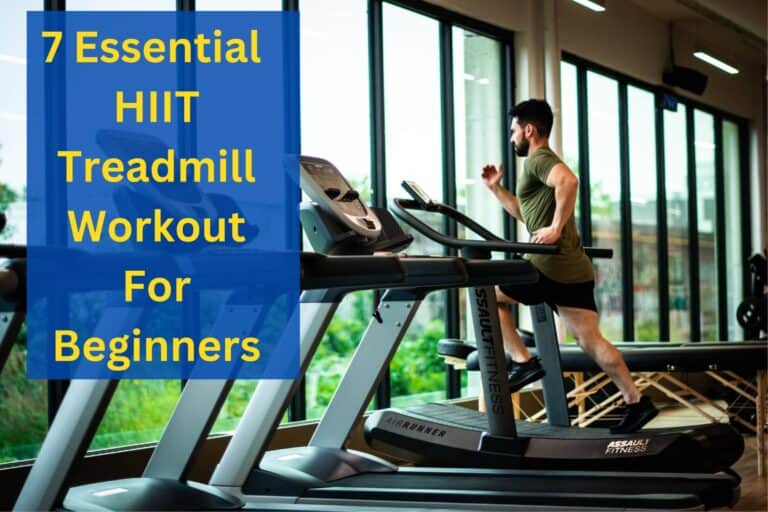A Comprehensive Guide to Isokinetic Exercises: Benefits, Risks, and Examples

What Is Isokinetic Exercises?
Isokinetic exercises have gained popularity in recent years, especially in the world of physical therapy and sports training. Isokinetic training is a form of resistance exercise that involves using specialized equipment to keep the speed of movement constant throughout the entire range of motion.
This technique makes it possible to work muscles at their maximum potential, with controlled movements and minimal risk of injury. Isokinetic exercises are beneficial for improving strength, endurance, and power in targeted muscle groups.
They are also helpful in rehabilitating after an injury or surgery. Whether you’re a professional athlete or someone undergoing physical therapy, isokinetic exercises can help you achieve your fitness goals safely and effectively.
Benefits of Isokinetic Exercises
Isokinetic exercise is a type of resistance training that focuses on controlled muscle contraction, providing a range of benefits for individuals looking to improve their functional performance. This type of exercise can target specific muscle groups through accommodating resistance, which maintains a consistent level of resistance throughout the range of motion.
Base on a case study from ncbi on effect of isokinetic strength training on post stroke patient shows increase strength in walking and speed.
The benefits of isokinetic exercise include:
- Increased muscle strength
- Increased endurance
- Increased power
- Improve range of motion of joint movements
This can benefit athletes, individuals in recovery, reduce injury, and those seeking to enhance their overall physical well-being.
Isokinetic exercise can also be a great way to reduce the risk of joint and muscle injuries. By engaging the muscles with resistance through a full range of motion, you can strengthen them and develop greater stability that is less prone to injury.
Finally, isokinetic exercises are beneficial because they can be tailored to suit any fitness level or goal. Whether you’re looking to increase strength, power, or speed, these exercises can be adjusted to offer the appropriate resistance. Additionally, you can adjust the speed and repetitions of each exercise depending on your own fitness level and goals.
To get started with isokinetic exercise, it is important to work with a trained professional to ensure proper form and technique, as well as to tailor the exercises to fit your individual needs. Incorporating isokinetic exercises into your workout routine can help you achieve your fitness goals and enhance your overall performance.
Who Should Use Isokinetic Exercise?
Isokinetic exercise can be used for a wide variety of individuals, including athletes wanting to increase their strength and power, individuals in recovery from injury or surgery, and those looking to improve their overall fitness level. It is important to note that this type of exercise can also support healthy aging by helping maintain joint movement and reduce the risk of injury.
No matter your exercise goals, incorporating isokinetic exercise into your routine can help you reach them and improve your physical health and performance. With the guidance of a trained professional, isokinetic exercises can provide a range of benefits to help you achieve optimal fitness.
Isokinetic training holds significant benefits for individuals experiencing chronic pain from conditions like arthritis, musculoskeletal disorders, obesity, and muscle strain. This specialized form of exercise not only enhances the range of motion but also strengthens the muscles in affected areas, thereby alleviating discomfort and potentially slowing the progression of certain diseases. Remember to consult with your doctor before embarking on any exercise program to ensure it aligns with your specific needs and circumstances.
Isokinetic exercise may also help improve balance and coordination, which can be beneficial for people who suffer from age-related balance issues or those affected by stroke or traumatic brain injuries. Improved muscle strength and range of motion can reduce the risk of falls and other serious injuries in elderly
Isokinetic vs Isometric vs Isotonic
As mentioned above, isokinetic is a form of exercise that involves maintaining constant resistance throughout the range of motion. Isometric and isotonic exercises both utilize resistance in training, but they differ in how tension is applied to the muscles.
Isometric exercise consists of muscle contraction or relaxation without any movement. While these exercises can enhance strength and endurance, they may not be ideal for athletes seeking performance improvement. Some examples of isometric exercises include the plank, wall sit, isometric push-up, and pull-up hold.
Isotonic exercise involves opposing muscle groups performing both concentric and eccentric movements against consistent resistance. Unlike isometric exercises, isotonic exercises are dynamic, allowing for a full range of motion. This form of exercise is highly beneficial for athletes aiming to optimize their performance by enhancing strength, power, and speed. Popular examples of isotonic exercises include push-ups, squats, pull-ups, and bench presses.
Understanding the Risks Involved with Isokinetic Exercises
Despite the many benefits of isokinetic exercises, it’s important to note that they involve an increased risk of injury. To minimize this risk, it’s essential to remain aware of your body and understand how certain movements and positions may affect your muscles. It’s also important to be mindful of proper form when performing isokinetic exercises.
In addition, it’s important to recognize the importance of rest periods and modify your exercises accordingly. It’s also important to gradually increase resistance during your workouts in order to avoid sudden overloads that can lead to injury. Finally, make sure you listen to your body and stop exercising if you experience any pain or discomfort. By understanding and following these guidelines, you can get the most out of isokinetic exercises while also reducing your risk of injury.
Before starting isokinetic exercise sessions, it is important to consult a physical therapist or healthcare professional. They will help you select the best exercises based on your abilities and goals. Additionally, it is crucial to set realistic goals and celebrate your progress along the way. By gaining a comprehensive understanding of isokinetic exercises and employing the proper training techniques, you can ensure safety while maximizing the benefits of your workouts.
Injury Prevention Tips for Isokinetic Exercises
Before beginning any exercise routine, it is important to take measures to reduce the risk of injury. Here are some tips to help you stay safe and prevent injuries while performing isokinetic exercises:
- Warm up before exercising. A light jog or dynamic stretching can help prepare your body for the workout ahead.
- Start with a lighter weight and increase gradually over time. This will allow your muscles to become accustomed to the movements associated with each exercise.
- Use proper form during each exercise to ensure the correct muscles are stretched and strengthened.
- Pay attention to your body, for it is your greatest ally that will alert you if something is amiss. If you start to feel pain or discomfort, cease immediately and take a few moments to rest.
- Allow 48 hours of recovery between workouts involving isokinetic exercises. This will give your muscles time to repair themselves before
In addition to isokinetic exercises, there are other types of strengthening exercises that can be beneficial. Resistance band exercises, for example, involve a resistance band placed around the body or anchored to a fixed object. This type of exercise allows you to add resistance without the need for dumbbells or barbells
Examples of Isokinetic Exercises for Different Muscle Groups
Isokinetic exercises are most often used to target specific muscle groups. Here are some examples of isokinetic exercises for different muscles:
Arms
- Biceps curls, triceps extensions, shoulder presses, and lateral raises.
Legs
- Lunges, squats, leg presses, and calf raises.
Back
- Lat pull-downs, bent-over rows, and hyperextension: Push-ups, bench presses, and cable crossovers.
Chest
- Push-ups, bench presses, and cable crossovers.
Arms
- Bicep curls and tricep extensions.
Core
- Planks and abdominal crunches.
Shoulders
- Upright rows and lateral raises.
Glutes and Hips
- Bridges, hip thrusts, and glute kickbacks.
These exercises are just a few of the many options available for isokinetic exercises. With a little bit of practice and dedication, you can make these exercises an integral part of your workout routine. Plus, with all of the health benefits that come from strengthening your muscles, it’s easy to see why isokinetic exercises are becoming increasingly popular. So, get moving and start building strength today!
Examples of Isokinetic Movements – Leg Press, Chest Press, and Shoulder Flyes
Isokinetic movements involve using a resistance machine or a cable pulley system to do exercises that move at a constant speed. This type of exercise is beneficial because it allows you to work your muscles with less risk of injury compared to traditional weight training. Here are some examples of isokinetic movements:
- Leg press: This focuses on the quadriceps, hamstrings, and glutes. To do this exercise, you should sit in the leg press machine and push against the resistance to move the weight up and down.
- Chest press: This focuses on your chest muscles. You can either use a cable setup or lie on a flat bench while pushing against a weighted barbell.
- Shoulder flies: This focuses on your shoulder muscles. You should stand in front of a cable machine and pull the handles to move the weight up and down.
Isokinetic movements can be beneficial for strengthening your muscles, increasing flexibility, and improving coordination. So make sure to add them to your workout routine if possible!
Tips on How to Incorporate Isokinetic Exercises Into Your Workouts
Incorporating isokinetic exercises into your workouts doesn’t have to be complicated. Here are some tips on how you can get started:
- Start slowly. It’s important to take things slowly at first and gradually increase the amount of resistance as you progress.
- Use proper form. Make sure to use the correct posture and technique when performing isokinetic exercises, as this will help protect you from injury.
- Take breaks. Like any other workout, make sure to take breaks between sets so that your muscles can rest and recover.
- Mix it up. Varying the type of exercises you do will help keep your workouts interesting and prevent boredom.
By incorporating isokinetic exercises into your routine, you can help strengthen your muscles and improve flexibility while reducing the risk of injury. So why not give them a try today? You might just find that they make all the difference in achieving your fitness goals!
Disclaimer: The information provided in this blog post is for educational and informational purposes only and should not be construed as medical advice or a substitute for professional medical guidance, diagnosis, or treatment. Always consult with a qualified healthcare professional before starting any exercise program or making changes to your current routine. The author and publisher of this blog post are not responsible for any adverse effects, injuries, or consequences resulting from the use or misuse of the information provided. The reader assumes full responsibility for any actions taken based on the information presented in this blog post.
Common Mistakes to Avoid While Doing Isokinetic Exercises
When performing isokinetic exercises, it’s important to be aware of some common mistakes and how to avoid them. Here are a few tips:
- Don’t overdo it. Going too fast or doing too many reps can put extra strain on your muscles and lead to injury.
- Don’t use momentum. It’s important to perform the exercises in a controlled manner and avoid using momentum to complete the movement.
- Don’t skimp on warm-up and cool-down. Make sure to do proper warm-ups and cool-downs before and after your workout to reduce the risk of injury.
By following these tips, you can ensure that your isokinetic exercises are performed safely and effectively. With consistent practice, you can reach your fitness goals in no time!
Conclusion
Isokinetic exercises offer a great way to strengthen your muscles and improve flexibility. By combining them with other types of exercise, you can create an effective workout routine that will help you reach your fitness goals efficiently and safely. So why not give isokinetic exercises a try today? You never know what kind of results you may see! Good luck on your fitness journey!
Remember to seek advice from a qualified medical professional before starting any exercise program. Your safety is always the number one priority, so make sure you take all necessary precautions and listen to your body when performing exercises. With the right guidance and dedication, you can reach your fitness goals in no time! Best of luck!
FAQ
Is isokinetic exercise suitable for rehabilitation purposes and injury prevention?
Isokinetic exercise is a specialized type of exercise that involves the use of specialized exercise machines to control the speed and resistance of muscle contractions. This type of exercise is often used for rehabilitation purposes and injury prevention as it provides a controlled and safe environment for patients to work on rebuilding their strength and full mobility after an injury.
The isokinetic exercise machine allows the patient to work their muscles through a full range while safely providing resistance. It is a popular choice for athletes who want to prevent injuries and keep their muscles strong and flexible. Overall, isokinetic exercise is a suitable and effective form of rehabilitation and injury prevention for those who need it.
How does isokinetic exercise help in building strength and muscle mass?
An isokinetic exercise is a form of training that can be used to build strength and muscle mass. Unlike traditional weightlifting exercises, which only provide consistent resistance, isokinetic exercise provides resistance that varies based on the force applied by the user. This means that the user can exert maximum force during every repetition of the exercise, which can help to build muscle mass more quickly and effectively.
Additionally, an isokinetic training program can be customized to suit the needs of the individual user, allowing them to gradually increase the amount of force they can produce over time. With the right training program and a commitment to consistent effort, isokinetic exercise can be a powerful tool for anyone looking to build strength and muscle mass.
Can isokinetic training be performed at home, or do I need specialized equipment?
When it comes to isokinetic training, the question on many people’s minds is whether or not they need specialized equipment. While isokinetic machines can provide a highly controlled and constant speed, they are often expensive and not easily accessible in a home setting.
However, that doesn’t mean you can’t still incorporate isokinetic training into your home workout routine. Using a stationary bike with resistance settings can simulate the necessary speed and resistance levels for isokinetic training.
Additionally, exercises such as knee extensions can be done with resistance bands or even body weight to achieve similar results. With a little creativity and resourcefulness, isokinetic training can be achieved in the comfort of your own home.
Is isokinetic exercise safe for individuals with joint issues or pre-existing conditions?
Isokinetic exercise can certainly be safe for individuals with joint issues or pre-existing conditions, but it’s important to work with a qualified exercise professional to determine the most appropriate exercises and intensities.
Isokinetic exercise may be particularly beneficial for individuals with chronic low back pain or other joint issues, as it can provide a safe and effective way to improve functional performance and balance control. However, as with any type of exercise, it’s important to listen to your body and avoid overexertion or pain. With the right guidance and care, isokinetic exercise can be a great way to support your overall health and wellness.





